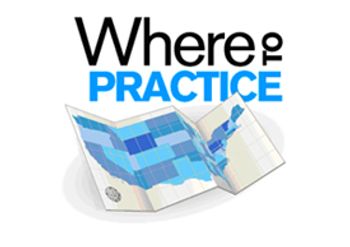
Practices might not be forced to sell out to hospitals, but they will need an alignment strategy, argues expert Marc Halley, MBA, because physician-hospital alignment is here to stay. Here's advice on picking the right partner.

Practices might not be forced to sell out to hospitals, but they will need an alignment strategy, argues expert Marc Halley, MBA, because physician-hospital alignment is here to stay. Here's advice on picking the right partner.

It's been a wild year in healthcare. And you ain't seen nothing yet.

Large numbers of Americans have been cutting back deeply on needed and preventive care. Now is the time to plot a survival strategy with fewer patients who spend more frugally.

The Washington Post is asking today whether the requirement in the new health reform law that everyone have health insurance or pay a tax penalty beginning in 2014 violates the Constitution. Never before in American history, say critics, has the government forced private citizens to purchase a particular product on the private market.

When President Obama wanted to address American physicians directly during last year’s health reform debate, he pointed Air Force One toward Chicago and spoke at the AMA’s annual convention.Next time, he might do well to find another venue.Because let’s face it: The AMA, though generally well-meaning and occasionally useful, has not been a genuine physician association for many years, if it ever was. Indeed, last year’s reform debate exposed, and aggravated, the AMA’s large and growing credibility problem with American physicians.

Today’s physicians are more determined than ever to take control of their future. They just aren’t doing it through the American Medical Association anymore.

Is board certification overrated? And are the boards' processes for certifying physicians in need of reform?

The AMA is taking its usual ineffective tack in response to Congress' latest failure to address the looming 21% Medicare pay cut. Maybe, instead, it should try something that might work.

Executive editor Bob Keaveney speaks out against the pervasive practice of cost-profiling physicians.

My recent column on the grave peril in which American primary care finds itself and my simple plan to reverse the tide has really struck a chord with many of you.

Any successful industry should bring value to the community that it serves. But, what about the American healthcare system? Executive director, Bob Keaveney, wonders: “Is this thing worth the price?”

Editorial director Bob Keaveney wonders, “Are we facing a future without primary-care physicians?”

Anyone notice Howard Fineman's column in Newsweek today? Too bad it took him a bout with food poisoning in Argentina to realize what I've been saying for months: that health care is simply too expensive in the United States, and that the reform proposals currently on the table would not do enough to reduce the cost of care.

Saying “I’m sorry” is a concept that continues to elude most hospitals and physicians. Fortunately that attitude is starting to change, albeit slowly. Read what editorial director Bob Keaveney has to say on the subject.

Read editorial director Bob Keaveney’s thoughts on the recent upheaval in the U.S. Senate, and the now cloudy future of healthcare reform.

The results of our annual Technology Survey are available this month, and since so many of you have been kind enough to tell us how you’re using technology to do your job, it seems only fair to tell you how we’re using it to do ours.

Physicians Practice is celebrating its 20th anniversary this year. We have reported many changes in the healthcare system. And, many not-so-new problems. But our objective has always been to empower American physicians to deal constructively with their world.

This month's cover story reveals the results of our annual Physician Compensation Survey. Looking at the numbers, an interesting subplot that emerges is the question of whether it is worth it anymore to shoot for practice partnership or ownership.

Which states welcome practicing physicians, and which ones fleece them? Check out our simple one-page scorecard for state-based information on Medicare pay, malpractice climate, income tax burdens, and more.

There’s been almost no serious debate on the one health reform proposal that would most profoundly affect Americans: the requirement that individuals purchase insurance. Our editorial director thinks this option carries huge political risks. Do you?

At a recent town hall, healthcare reform advocate Howard Dean said “…the reason why tort reform is not in the bill is because the people who wrote it did not want to take on the trial lawyers.” Is he right?

Folks, allow me to introduce our newest Practice Notes blogger, Melissa Garduno Young, MD. Dr. Young is an endocrinologist in New Jersey who is about to embark on a solo practice and has agreed to blog about her experiences in starting out on her own. Her first post is below.

Last night the president said: "Finally, many in this chamber -- particularly on the Republican side of the aisle -- have long insisted that reforming our medical malpractice laws can help bring down the cost of health care. I don't believe malpractice reform is a silver bullet, but I have talked to enough doctors to know that defensive medicine may be contributing to unnecessary costs. So I am proposing that we move forward on a range of ideas about how to put patient safety first and let doctors focus on practicing medicine..." What is this "range of ideas"? The president may have been referring to efforts, in 2006, to fund health courts in the states. This is a good idea but don't get too excited, tort reformers.

It was a good speech, a fine speech, an Obama speech, and in some ways a surprising speech. The president just finished speaking, so here are some thoughts off the top of my head:

By now you’ve heard all the assumptions that people make about doctors. You’re a bunch of wealthy, country-club Republicans driving Beemers and living near golf courses. Or are you?

ReachMD broadcasts to physicians on XM Satellite radio. As physicians become open to communication styles that are shorter and more interactive, technology is jumping in to provide these new platforms. Are you ready?

Safeway, a grocery chain with 200,000 employees in 22 states, claims that it held its employee healthcare costs flat for three years running. How, you might ask? Read on for more about this radical program.

Of all Wal-Mart’s innovations, the most surprising is its plan to sell EMRs off the shelf. Few private practices use EMRs - most cite cost as the biggest hurdle. Can Wal-Mart really make a difference?

Three years after enacting its plan to cover every state resident, the percentage of uninsured in the Bay State is now in the single-digits. Why isn’t this a good thing? Hear what our executive editor has to say.

Maryland’s state insurance commissioner recently toyed with the idea of reclassifying retainer-based practices as a type of insurance. Shaking your head, too? Read on to see what our executive editor has to say.